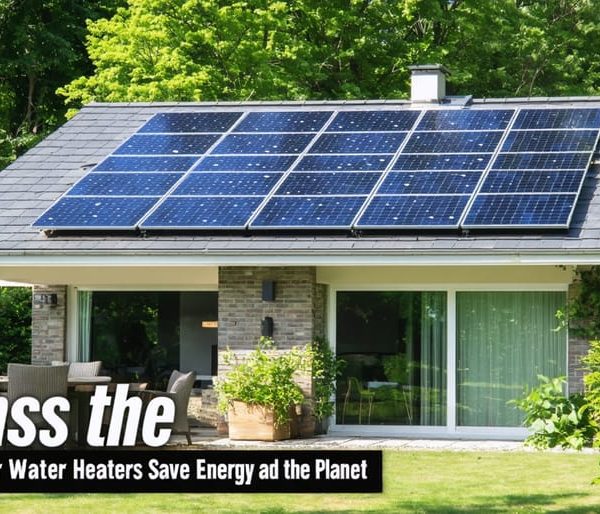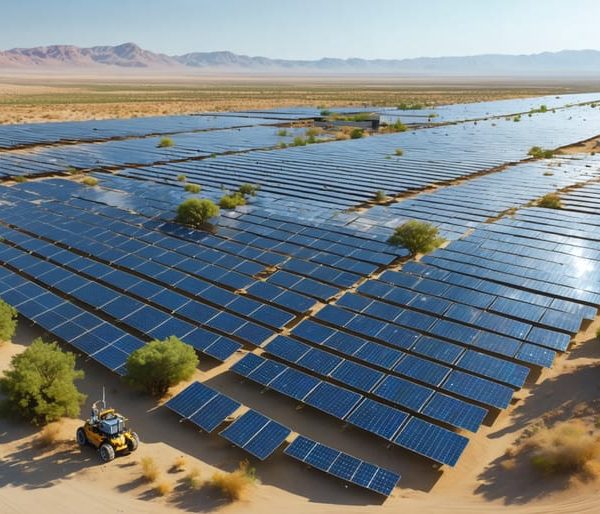Solar Water Fountains: The Clean, Cost-Free Way to Purify Your Water
Transform your outdoor space into a sustainable oasis with solar-powered water fountains – an eco-friendly solution that harnesses the sun’s energy to create soothing water features without increasing your electricity bills. These innovative fountains have revolutionized traditional water features by eliminating the need for complex wiring or nearby power sources, making them increasingly popular among environmentally conscious homeowners and property managers.
Recent advances in solar technology have significantly improved the reliability and performance of these fountains, delivering consistent water flow even during partially cloudy days. While traditional electric fountains typically cost $50-100 annually to operate, solar fountains run completely free after initial installation, providing both environmental and financial benefits.
Whether you’re looking to enhance your garden’s ambiance, create a peaceful meditation space, or add value to your commercial property, solar-powered water fountains offer a practical, sustainable solution that combines aesthetic appeal with smart energy management. Understanding their capabilities and limitations will help you decide if they’re the right choice for your specific needs.
How Solar Water Fountains Transform Water Quality
The Science Behind Solar Purification
The magic of solar-powered water purification lies in its elegant simplicity. When sunlight hits the solar panels, it generates electricity that powers both the pump and filtration system. This creates a self-sustaining cycle where water is continuously circulated through multiple stages of filtration.
The process begins with a pre-filter that catches larger debris like leaves and insects. The water then moves through activated carbon filters, which remove chemicals and improve taste. Some advanced systems even incorporate UV sterilization, powered by the same solar energy, to eliminate harmful bacteria and pathogens.
What makes this system particularly effective is that peak sunlight hours coincide with the highest water circulation needs. During bright daylight, the system operates at maximum efficiency, naturally aligning with when your fountain is most likely to be enjoyed. The filtered water remains clean even during cloudy periods, thanks to built-in retention systems that maintain water quality when solar power is less available.
This sustainable approach not only purifies water but also prevents stagnation, reducing algae growth and maintaining crystal-clear water without harsh chemicals.

Key Purification Benefits
Solar-powered water fountains offer remarkable purification benefits through their continuous circulation system. The constant movement of water creates natural oxygenation, which is essential for maintaining a healthy aquatic environment. This enhanced oxygen level helps beneficial bacteria thrive while making it difficult for harmful algae to establish itself.
One of the most significant advantages of these fountains is their role in eco-friendly water filtration. The solar-powered pump creates a consistent flow that helps prevent stagnation, naturally reducing the buildup of contaminants and debris. This circulation also helps maintain a more stable water temperature, which further discourages algae growth and mosquito breeding.
The fountain’s spray pattern creates tiny water droplets that increase surface area contact with air, maximizing the natural purification process. This action helps break down organic matter and reduces the need for chemical treatments. For pond owners, this means clearer water, healthier aquatic life, and significantly less maintenance work – all powered by clean, renewable solar energy.

Real-World Performance Analysis
Advantages in Daily Use
Solar-powered water fountains offer numerous practical advantages that make them an excellent choice for daily use. The most immediate benefit is the significant reduction in energy costs – these fountains harness free solar power, eliminating the need for electrical connections and reducing your monthly utility bills.
Maintenance is remarkably straightforward compared to traditional fountains. Without complex electrical wiring or the need for nearby power outlets, you have greater flexibility in placement and fewer components that could potentially fail. The solar panels are designed to be weather-resistant and typically only require occasional cleaning to maintain optimal performance.
The environmental impact is particularly noteworthy. By using clean, renewable energy, these fountains help reduce your carbon footprint. A typical solar fountain can save approximately 100-200 watts of electricity daily, which adds up to meaningful energy conservation over time. They also create natural water circulation without using harmful chemicals, providing a safer environment for local wildlife.
For homeowners concerned about property value, solar fountains add an eco-friendly feature that increasingly appeals to potential buyers. Commercial property managers often find that these fountains demonstrate their commitment to sustainability while providing aesthetic appeal. The combination of energy independence, low maintenance requirements, and positive environmental impact makes solar-powered fountains a practical choice for conscious consumers looking to make sustainable choices in their outdoor decor.
Limitations to Consider
While solar-powered water fountains offer numerous benefits, it’s important to understand their limitations before making a purchase. The most significant consideration is weather dependency – these fountains rely entirely on sunlight to function. On cloudy days or during winter months, you might notice reduced performance or intermittent operation.
Flow rate variations are another factor to keep in mind. Unlike electrical fountains that maintain consistent water flow, solar fountains may experience fluctuations depending on sunlight intensity. The water flow might be stronger during peak sunshine hours and weaker during early morning or late afternoon.
Capacity constraints can also affect your fountain’s functionality. Most solar fountains come with smaller pumps compared to their electrical counterparts, which means they typically handle less water volume. This limitation particularly impacts larger installations or fountains intended for significant water movement.
Storage capability is another consideration. Unless your fountain includes a battery backup system, it won’t operate after sunset. While battery-equipped models are available, they usually come at a higher price point and may require occasional replacement.
Temperature sensitivity can affect performance too. Extreme heat might reduce solar panel efficiency, while freezing temperatures can damage the pump system. For year-round operation, you’ll need to take proper precautions during harsh weather conditions.
Despite these limitations, many users find that the benefits of solar fountains outweigh their constraints, especially when used in suitable environments with adequate sunlight exposure.
Installation and Maintenance Tips

Optimal Placement Guidelines
The success of your solar-powered water fountain largely depends on its placement. For optimal performance, position your fountain in a location that receives 6-8 hours of direct sunlight daily. South-facing spots typically offer the best sun exposure in the Northern Hemisphere, while north-facing locations work better in the Southern Hemisphere.
Avoid areas shaded by trees, buildings, or other structures that could block sunlight from reaching the solar panels. Remember that shadows move throughout the day, so observe your chosen location at different times to ensure consistent sun exposure.
Consider seasonal changes too – the sun’s path varies between summer and winter. Installing your fountain with adjustable solar panels allows you to modify the angle based on the season, maximizing energy collection year-round.
For safety and aesthetics, place your fountain away from high-traffic areas and ensure the solar panel cables can be neatly concealed. If your desired location doesn’t receive adequate sunlight, consider using extended cables to position the solar panel in a sunnier spot while keeping the fountain in your preferred location.
Keep the fountain at least 10 feet away from walls or fences to prevent water damage and allow proper air circulation. This spacing also makes maintenance easier when you need to clean the panels or adjust the water flow.
Essential Maintenance Steps
Maintaining your solar-powered water fountain is surprisingly simple and crucial for its longevity. Start by checking the solar panel weekly – a quick wipe with a soft, damp cloth removes dust and debris that could reduce efficiency. During autumn, pay special attention to fallen leaves that might collect on the panel.
The fountain basin needs monthly cleaning to prevent algae buildup and mineral deposits. Empty the water, use a mild soap solution, and scrub gently with a soft brush. Avoid harsh chemicals that could damage the pump or harm visiting wildlife. In hard water areas, consider using a water treatment solution to prevent calcium buildup.
Check the pump every three months by removing and cleaning it according to the manufacturer’s instructions. Look for any debris caught in the impeller, which could affect water flow. During winter months in colder climates, it’s essential to store your fountain indoors to prevent freeze damage.
The battery system, if your model includes one, should be tested seasonally to ensure proper charging and operation. Most batteries last 1-2 years with proper care. Keep backup batteries on hand to maintain consistent operation during cloudy periods.
Remember to trim nearby vegetation regularly to prevent shadows from falling on the solar panel, maximizing its sun exposure throughout the day.
Cost-Benefit Analysis
When evaluating solar-powered water fountains, understanding the solar power cost savings is essential for making an informed decision. While the initial investment might be higher than traditional electric fountains, ranging from $100 to $500 for residential models, the long-term benefits often outweigh the upfront costs.
The primary financial advantage is the elimination of electricity bills related to fountain operation. A typical electric fountain can add $30-60 annually to your energy costs, while solar versions operate completely free after installation. Most solar fountains pay for themselves within 2-4 years, depending on usage and local electricity rates.
Environmental benefits are equally compelling. By choosing solar power, you’ll reduce your carbon footprint by approximately 100-200 pounds of CO2 emissions annually per fountain. The systems typically last 5-7 years with proper maintenance, making them an environmentally responsible choice for the long term.
Additional cost benefits include simpler installation (no electrical wiring needed), lower maintenance requirements, and potential tax incentives in some regions. However, consider that you might need to replace the solar panels or batteries every 5-7 years, which can cost $50-100. Despite these occasional replacement costs, most users report significant overall savings and satisfaction with their investment in solar-powered fountains.
Solar-powered water fountains prove to be an excellent investment for both residential and commercial settings. They offer a perfect blend of aesthetic appeal, environmental responsibility, and cost efficiency. With zero electricity costs, minimal maintenance requirements, and the ability to enhance outdoor spaces naturally, these fountains deliver exceptional value over time.
While initial costs might be higher than traditional fountains, the long-term savings and environmental benefits make them worthwhile. Their effectiveness in creating soothing water features without increasing carbon footprint has made them increasingly popular among environmentally conscious property owners.
For those considering a water feature, solar fountains represent a smart, sustainable choice that combines beauty with practicality. As solar technology continues to improve, these fountains will only become more efficient and reliable, making them an even more attractive option for creating peaceful, eco-friendly outdoor spaces.











